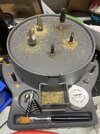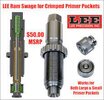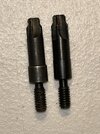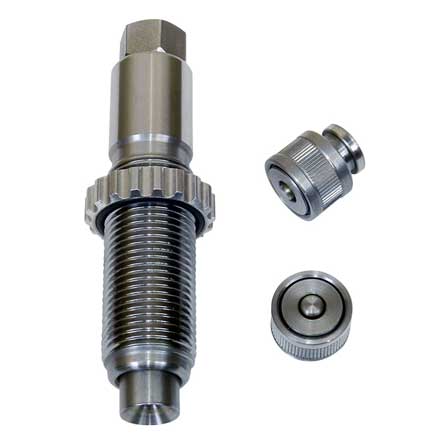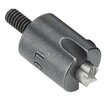In the past, for reaming crimped primer pockets, I had bought the Lyman kit with the multiple primer pocket tools. After I used it the first time I ever rammed primer pockets, I had issues seating the primers. I went back and reamed the brass more, and still I had problems seating a primer. Then I chucked it in a drill and reamed the heck out of the brass that still needed primers. Finally got all that brass primed. I’m prepping more brass and saw that someone recommended the Burstfire reamer. I had been looking into options and thought I’d give the $17 reamer a try before buying a swager.
Using a go/no-go gauge, I checked 20 pieces of once fired Lake City NATO brass to verify the go gauge would not go.
Then I used the Burstfire reamer on 10 pieces and the Lyman on 10 pieces and rechecked all pieces with the gauge.
For the brass reamed with the Burstfire, I used moderate pressure and a single, but long twist. The go gauge fit all 10 primer pockets.
For the brass reamed with the Lyman, I used the same reaming motion as with the Burstfire reamer. The go gauge fit 3 primer pockets.
I will be using the Burstfire chucked in a drill and chuck the Lyman in the spare parts drawer for the temporary black hole that exists near my house to swallow it up at the exact moment I need it.
Below is a photo of my go/no-go gauge that reappeared when the temporary black hole moved on.
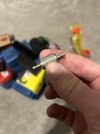
Using a go/no-go gauge, I checked 20 pieces of once fired Lake City NATO brass to verify the go gauge would not go.
Then I used the Burstfire reamer on 10 pieces and the Lyman on 10 pieces and rechecked all pieces with the gauge.
For the brass reamed with the Burstfire, I used moderate pressure and a single, but long twist. The go gauge fit all 10 primer pockets.
For the brass reamed with the Lyman, I used the same reaming motion as with the Burstfire reamer. The go gauge fit 3 primer pockets.
I will be using the Burstfire chucked in a drill and chuck the Lyman in the spare parts drawer for the temporary black hole that exists near my house to swallow it up at the exact moment I need it.
Below is a photo of my go/no-go gauge that reappeared when the temporary black hole moved on.



